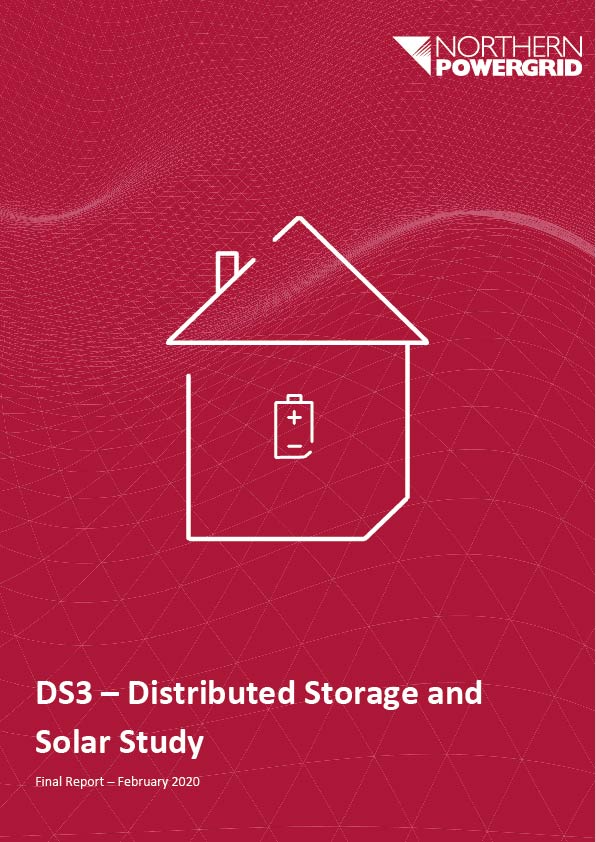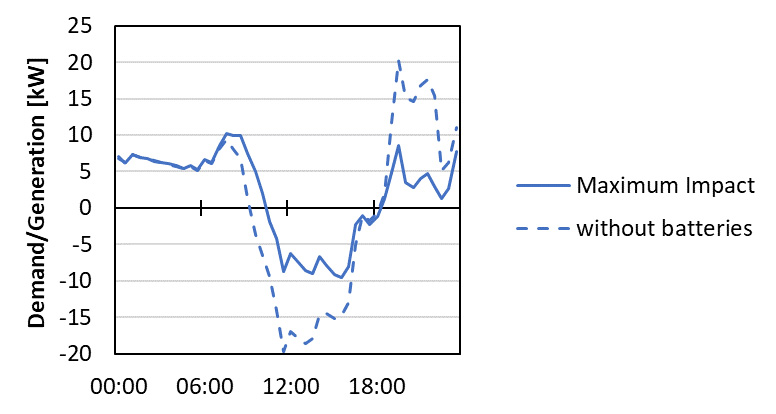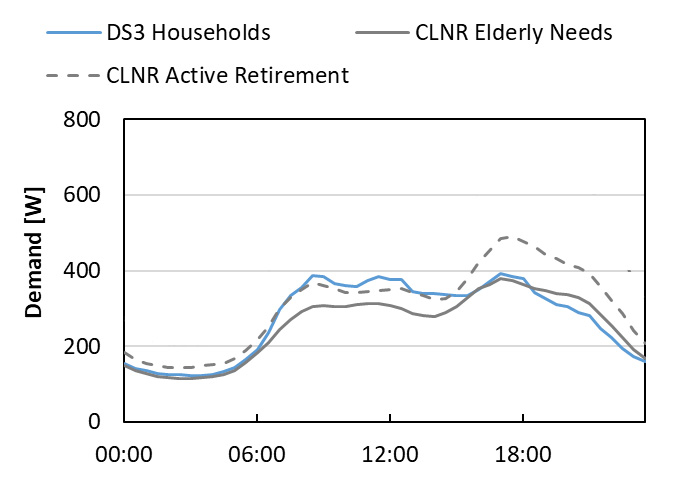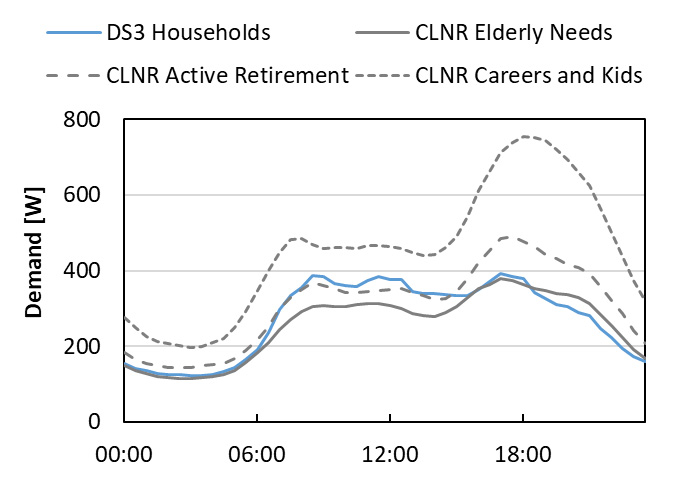
Northern Powergrid recently reported on a two year trial of homes using battery storage and solar panels. The trial found that:
- Peak electricity demand from the grid could be reduced by between 29-65% depending on the battery storage control strategy used
- Peak solar export to the grid could be reduced by 20-38%
The trial demonstrates that adding domestic battery storage would permit the addition of more solar PV panels on the grid without additional network reinforcement. This solves a potential problem on hot summer days when solar PV export risk overloading the grid. It may also provide a solution to an expected increase in peak load from the planned future switch from gas to electric heating and the extra demand from recharging electric cars at home.
It also points the way to how battery storage control software could be configured to support the electricity grid rather than just maximising the self-consumption of solar generated electricity. Consumers who allow the District Network Operator (DNO) to manage the release of stored electricity to the grid could be paid for providing these services.
Figure 1 illustrates the impact having battery storage on one feed from the sub-station used in the trial. The feed had 36 homes connected of which 20 participated in the trial. “Maximum Impact” was one of the battery control strategies tested. On a summer’s day, the introduction of battery storage reduced peak solar power exported from around 20kW to around 10kW at noon. At 6pm, releasing the stored electricity reduced peak demand from around 20kW to circa 8kW. This specific control strategy was designed to deliver maximum benefits to the DNO rather than the householder. Other control strategies tested delivered maximum benefits to the householder, whilst delivering benefits to the DNO at a slightly reduced level.

Shows Situation With & Without Batteries Using a Specific Battery Control Strategy (Maximum Impact)
Image courtesy of Northern Powergrid
Battery Storage Control Strategies: Peak Demand and Peak Solar Generation
There are key differences between the best control strategies for the homeowner and the grid operator (DNO) in relation to managing peak demand and peak solar output. By making payments to the householder these differences could be reconciled, in a way that is fair to all.
Peak Electricity Demand: The DNO wants the ability to sometimes reduce the peak network demand at around 6pm. Ideally domestic battery storage systems would release stored energy onto the grid at this time, rather than keeping it for later self-consumption. However this could mean that the householder would be exporting electricity which would potentially be needed later to power the home, reducing self consumption and requiring electricity to be purchased later in the evening.
Potential solution: A payment, to allow the DNO to access the home’s battery storage at peak times and replenish it later in the evening, could meet the needs of the householder and the DNO.
Peak Solar Export: Households are happy to store solar PV in battery storage until the storage is full, as can happen when there are many sunny days in a row. Then all solar generation would be exported to the grid. The grid operator would like to be able to sometimes reduce peak solar PV export to the grid. When sunny weather is predicted for a number of days the DNO would ideally want the home’s battery storage to be empty before the peak generation, so that the maximum storage was available to reduce the export peak. It may also want early morning domestic solar PV generation to be exported rather than stored for the same reason.
Potential solution: A payment to allow the DNO to export the energy in the home’s battery storage and also to export solar generated electricity even when the battery was not full would be needed to compensate the householder.
Details of the Battery Storage Trial
Forty domestic scale batteries were installed in 36 Homes in Barnsley, 27 of which also had a solar PV system. Batteries were either 2kWh or 3kWh capacity. They were all connected to an electricity sub-station which supplied a total of 119 homes.
Four battery control strategies were trialled which ranged from allowing the District Network Operator (DNO) full control, to maximising self-consumption for the householder. The trial was carried out using social housing tenants, who were generally retired and used gas heating. Figure 2 shows that the demand profile of the trial householders (DS3) matches those of Elderly Need and Active Retirement user segments identified in a 2015 Customer-Led Network Revolution (CLNR) Study. The CLNR study identified typical electricity usage of different households based on occupant demographics.

Image courtesy of Northern Powergrid
Trial households (DS3) are not typical of all homes connected to the electricity grid. Electricity demand was relatively flat, as homes were generally occupied throughout the day by retired people. Figure 3 shows the difference in peak demand of a working family with kids (CNLR Career and Kids) which has a much higher peak demand at around 6pm.

Image courtesy of Northern Powergrid
Conclusion
The trial has demonstrated that domestic storage can deliver benefits to the electricity grid in terms of reducing both peak electricity demand and peaks solar export. Whilst these benefits could potentially also be delivered by a larger battery at the sub-station, it may be more cost effective to pair domestic solar electricity generation with domestic storage batteries and provide payments to homes who provide these grid services. This market may well develop over coming years as the cost of domestic storage continues to fall and battery storage unit capacity increases.
References
CLNR (2015). Customer-Led Network Revolution Project Data. Available at: http://www.networkrevolution.co.uk/ [Accessed 5 March 2020]
Northern Powergrid (2020). DS3 – Distributed Storage and Solar Study [online]. Available at: https://www.northernpowergrid.com/asset/0/document/5397.pdf [Accessed 5 March 2020]
Leave a Reply